Options
1805 Mexico 8 Reales - Wide vs Narrow vs some other date
 TwoKopeiki
Posts: 9,539 ✭✭✭✭✭
TwoKopeiki
Posts: 9,539 ✭✭✭✭✭
Mexico 1805 Mo-TH 8 Reales is the second most common coin in the Portrait series (most common being the 1809 Mo-TH). I picked-up a nice AU example early in my collecting, later replacing it with a slightly better example from Aureo & Calico in 2013. Haven't given much thought to this coin until I was going through NGC's price guide and Carlos IV registry composition and saw that there are 3 coins in the set for 1805. 4 if you count the 1805/4 overdate.
Those are:
1805 Mo TH
1805 Mo TH Narrow Date
1805 Mo TH Wide Date
Checking a few of my references - Calbeto only lists 1 coin for 1805; Krause lists both Wide and Narrow Dates, valued identically; Cayon has the common 1805 Mo TH but also something I never knew existed - an 1805 Mo FF assayer (will have to look more into this one, but irrelevant for this topic); and I don't own a copy of Calico/Trigo, but our host just puts Calico-704 on all 1805's.
Here are some examples. See if you start to notice anything about the date.
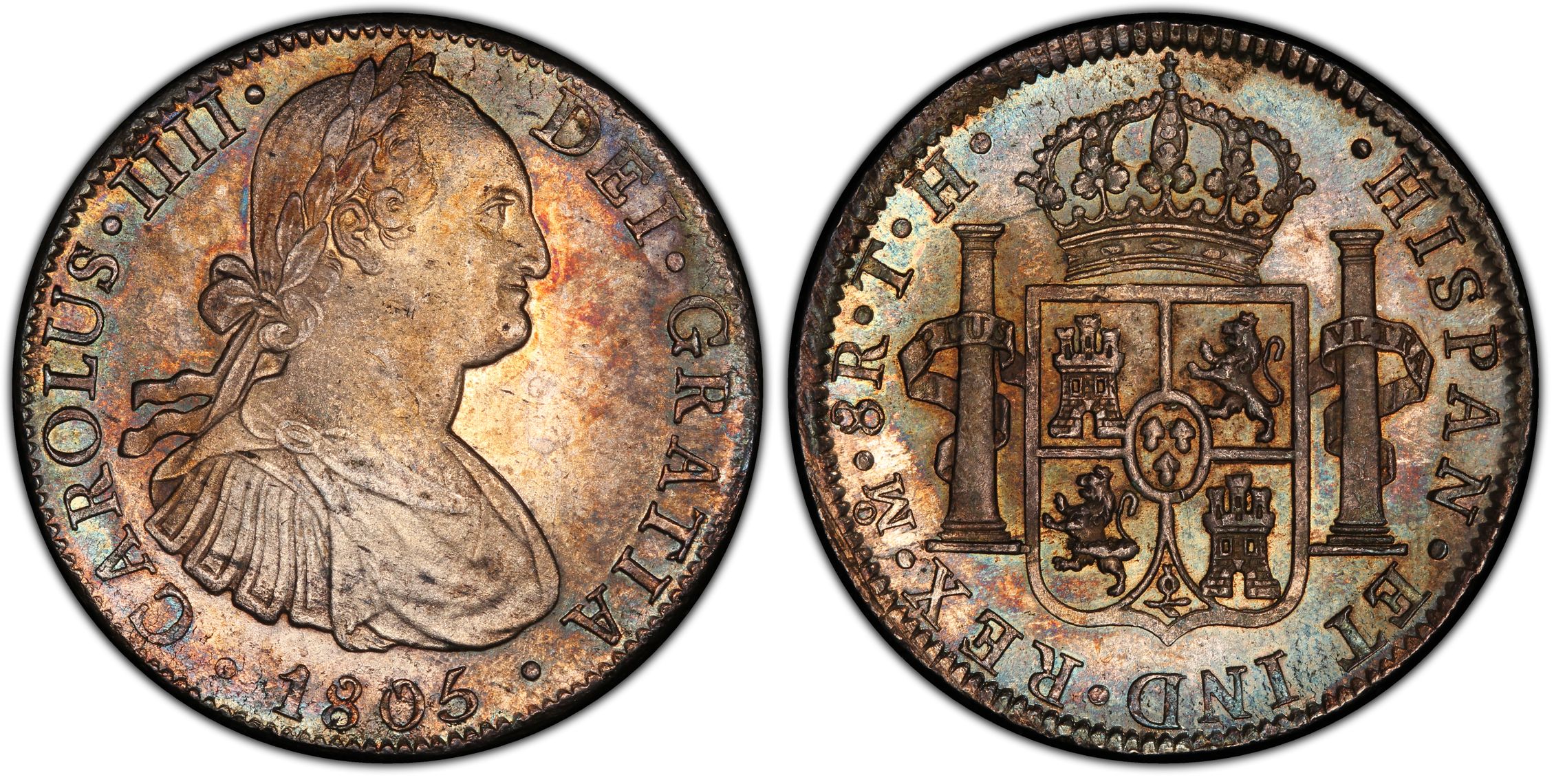
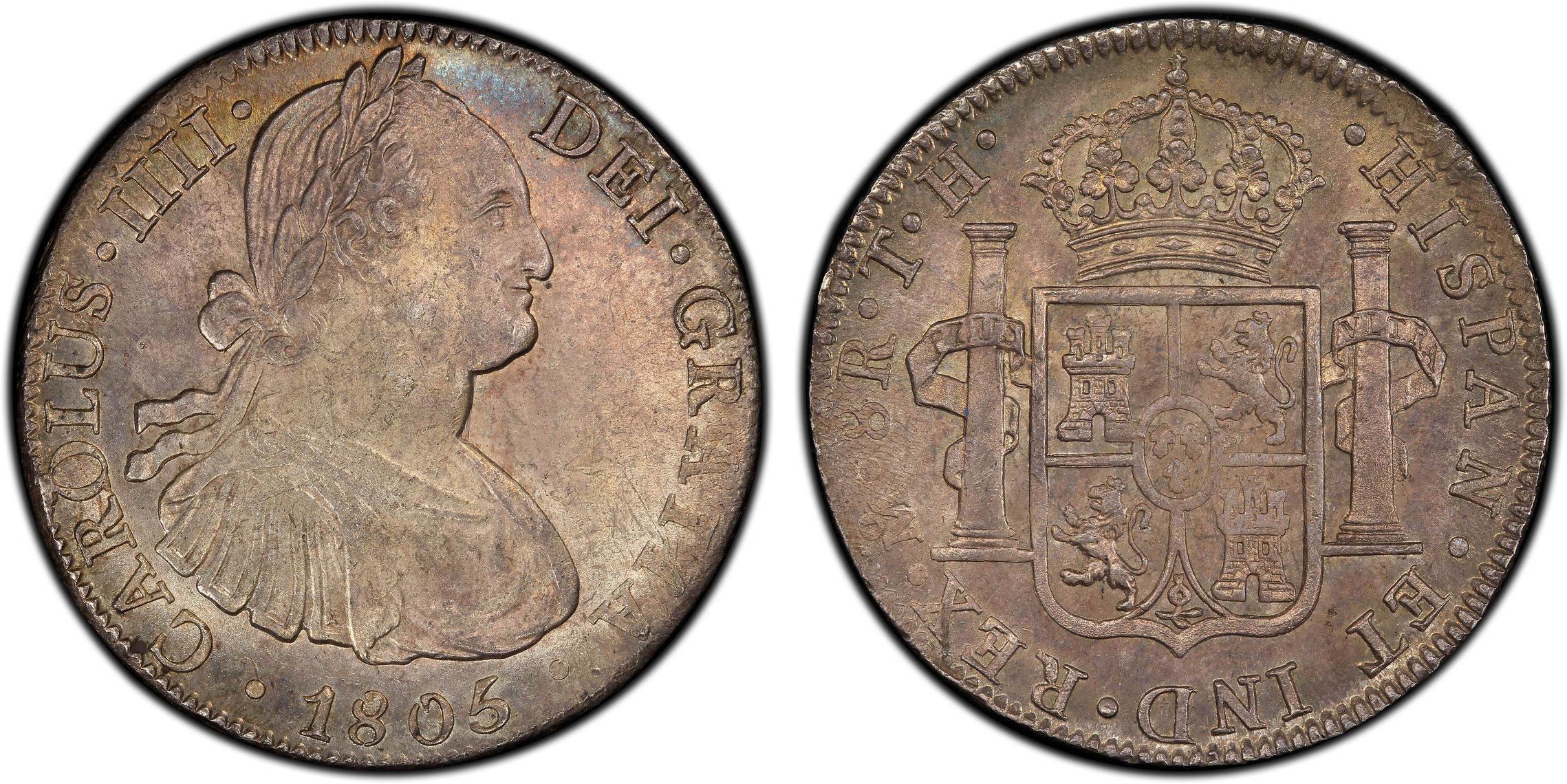
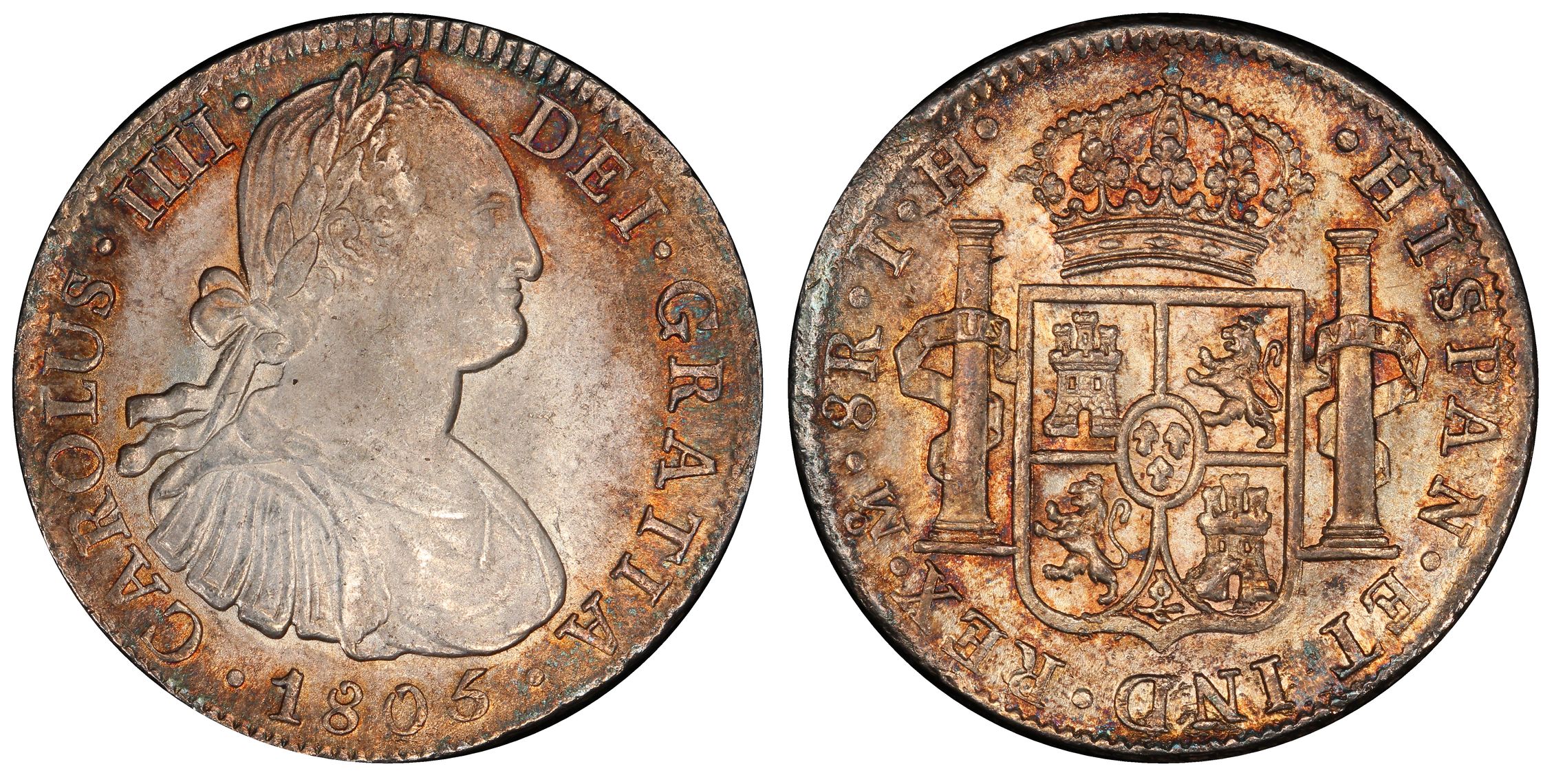
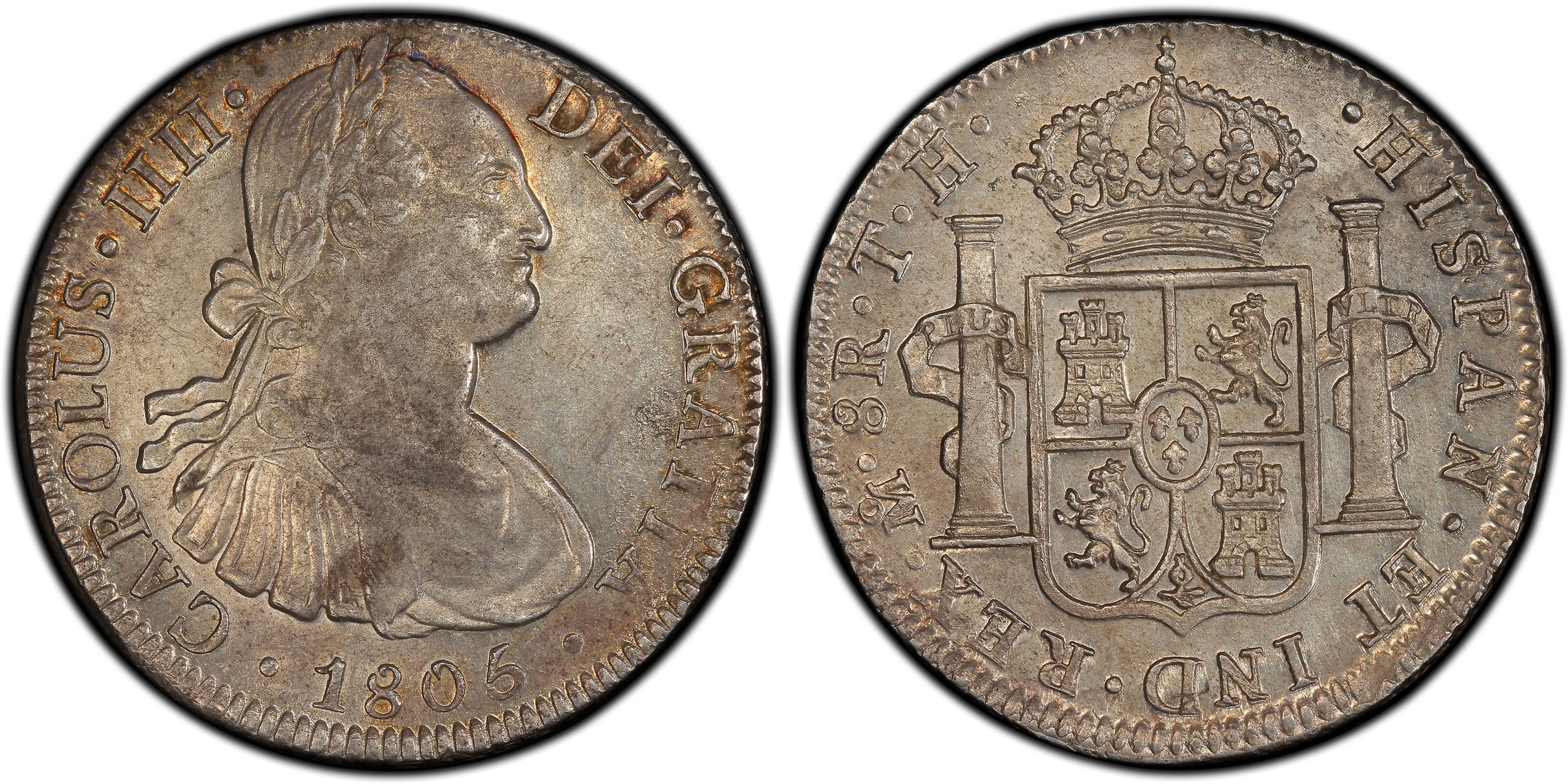
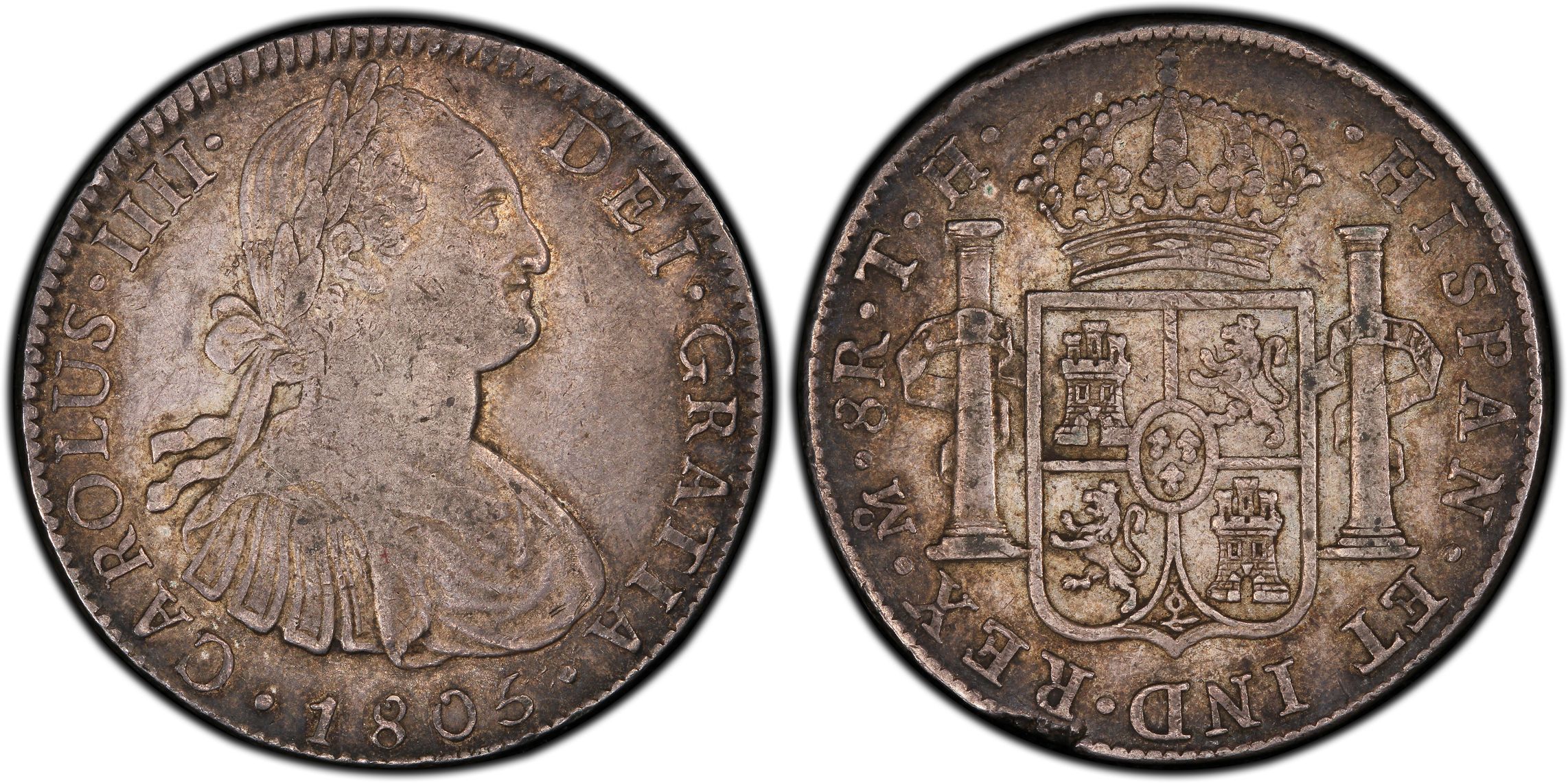
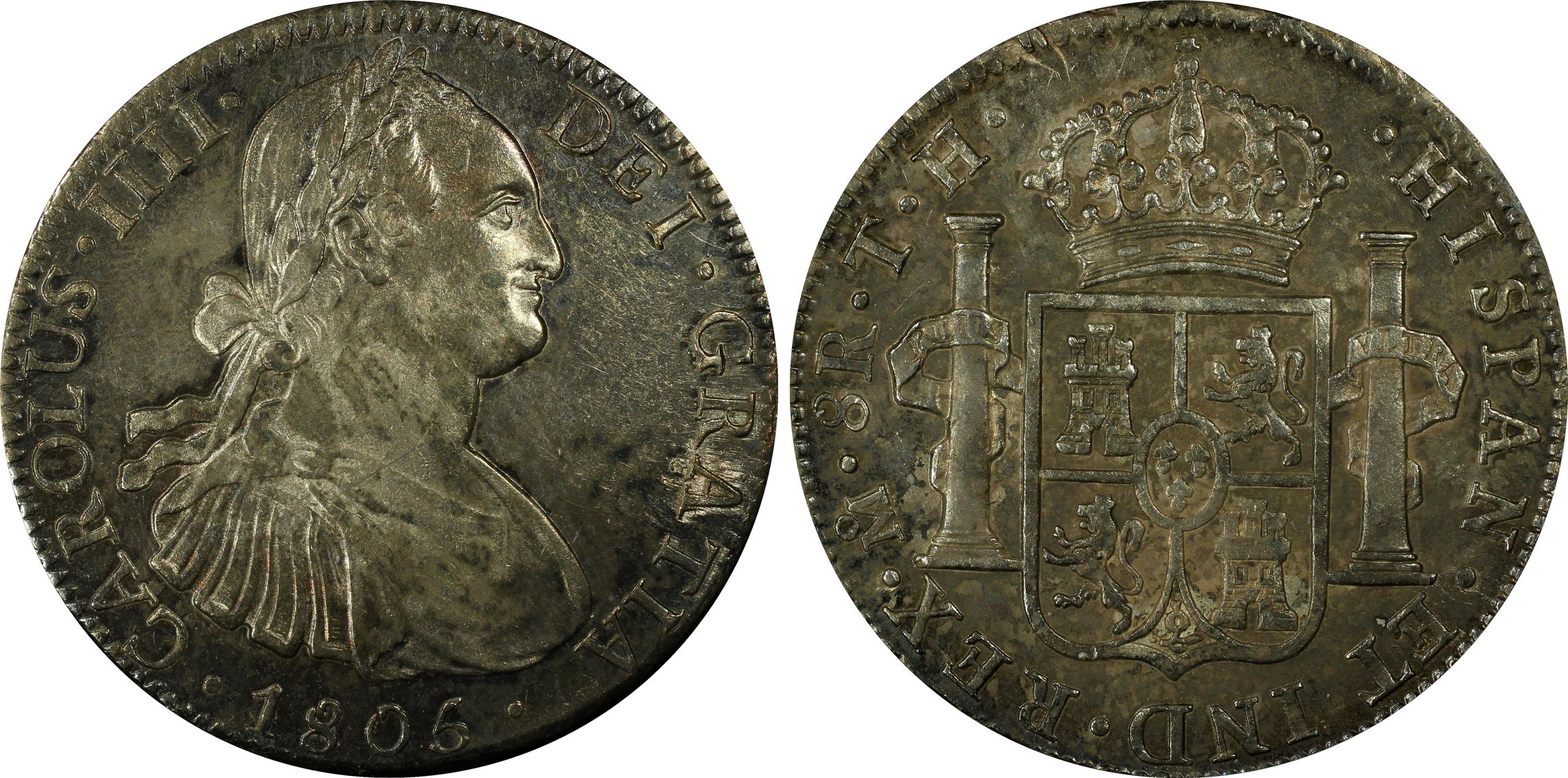
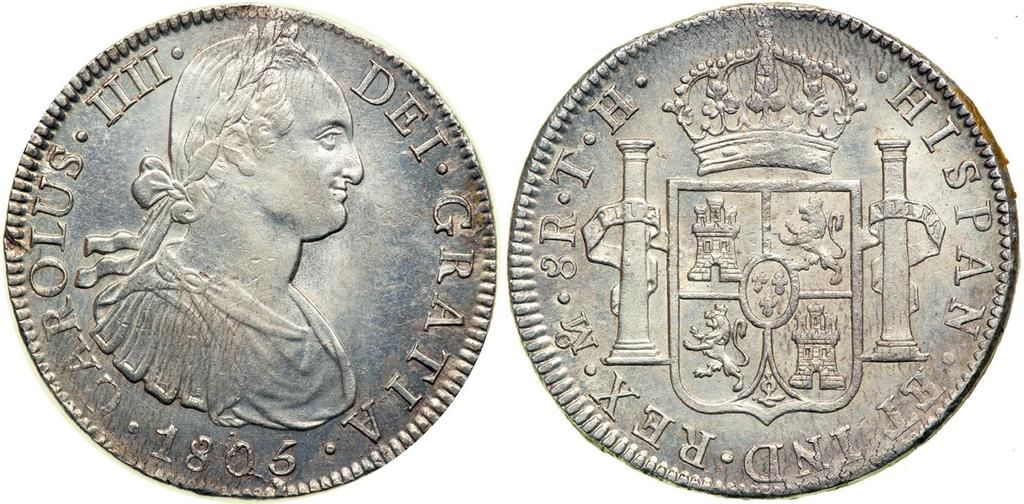
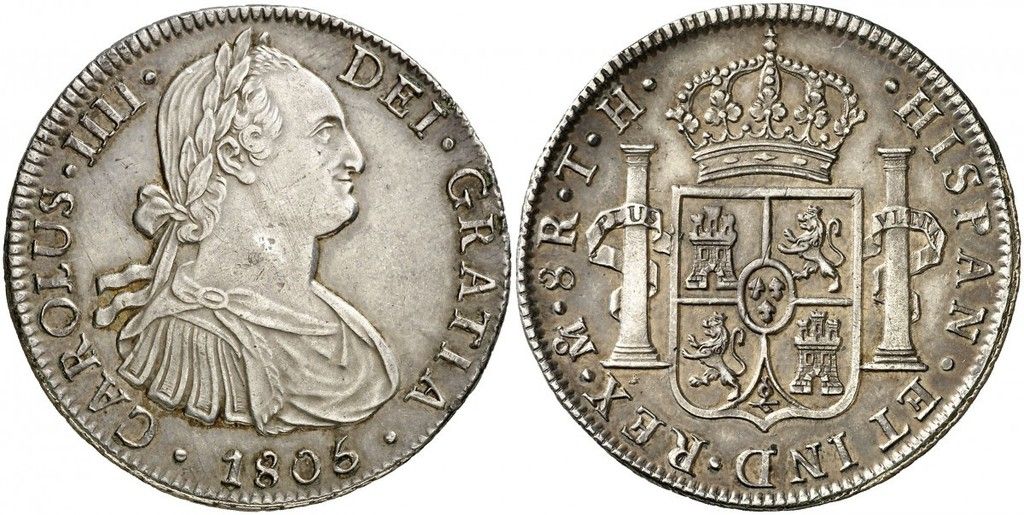
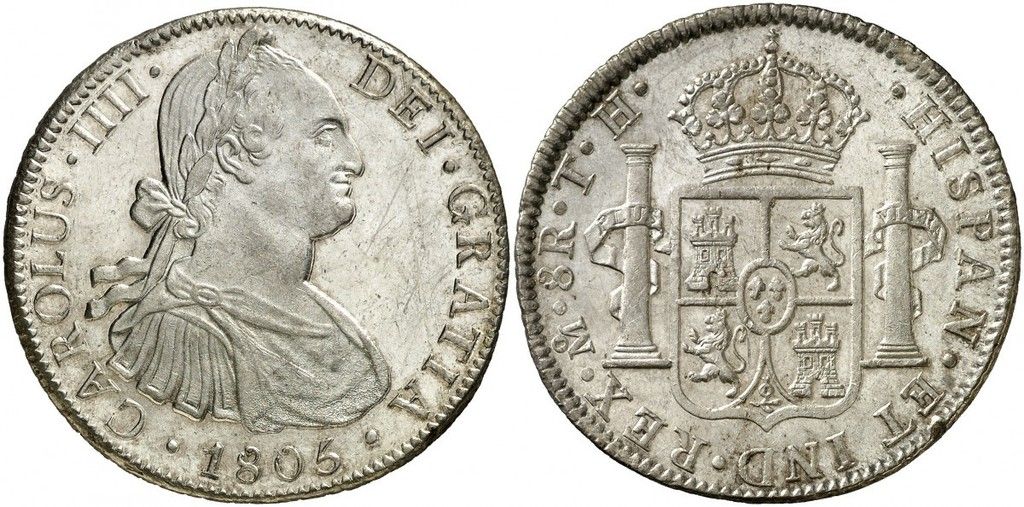
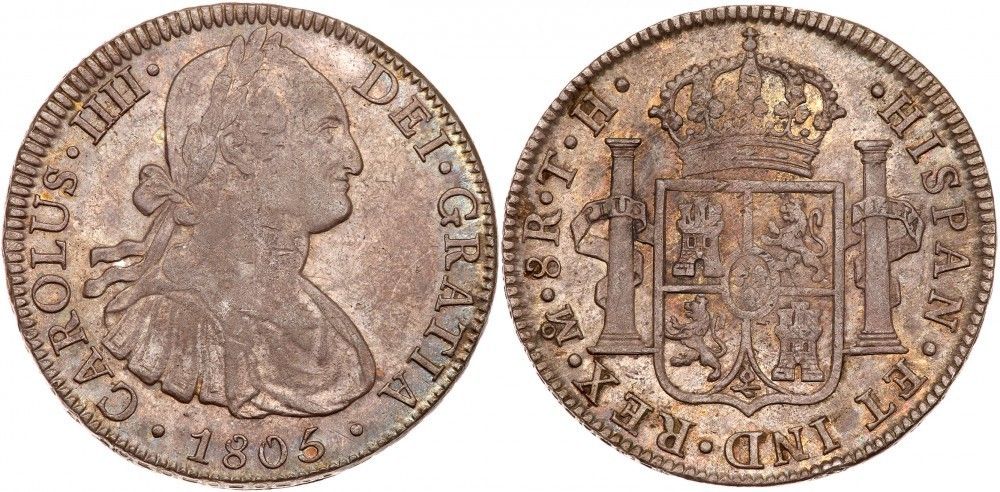
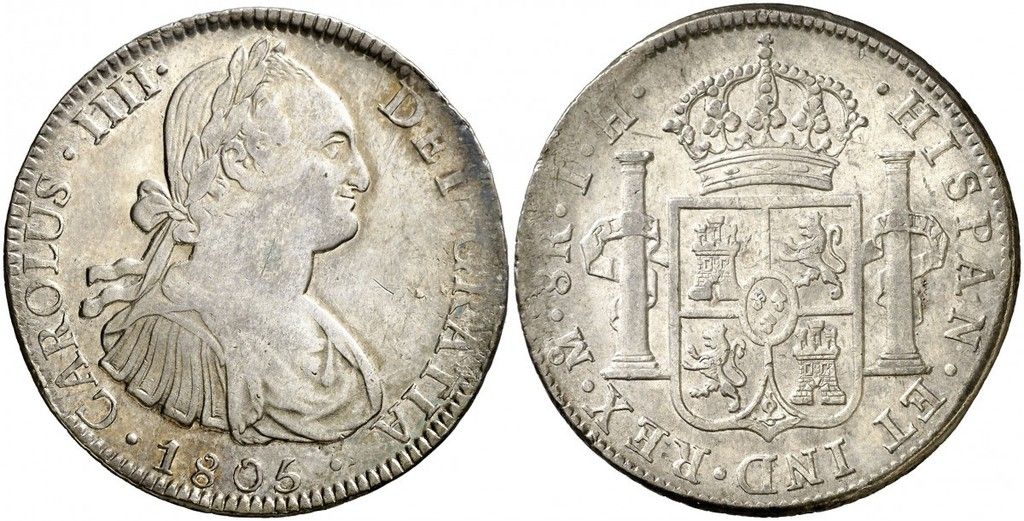
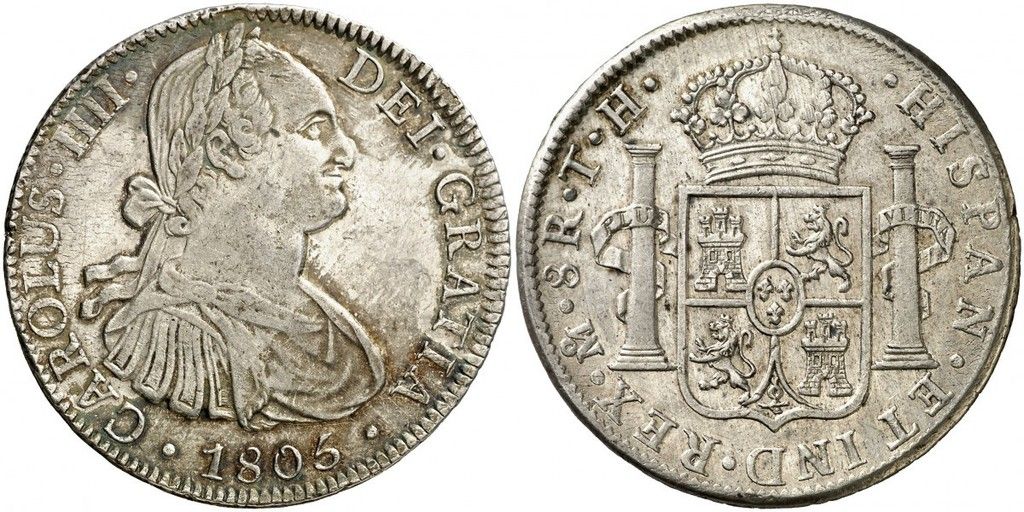
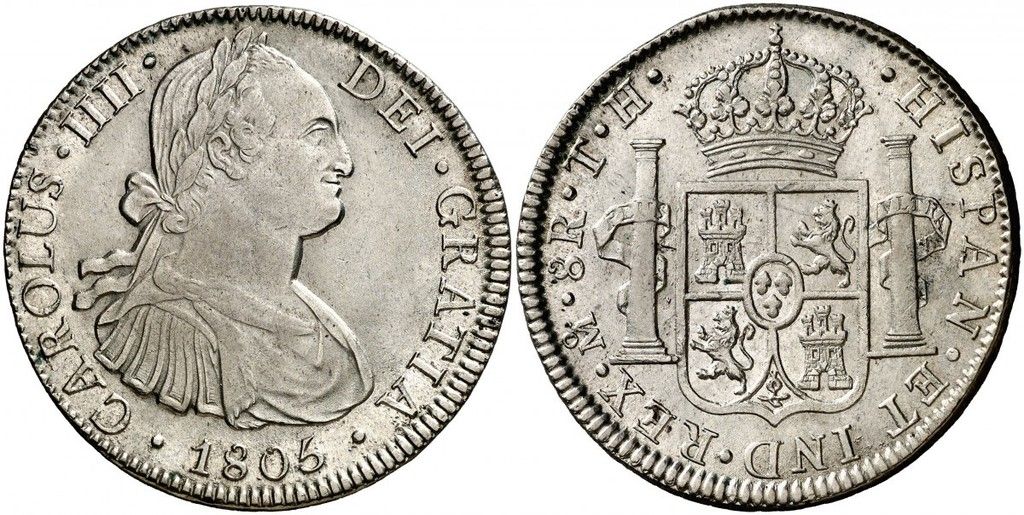
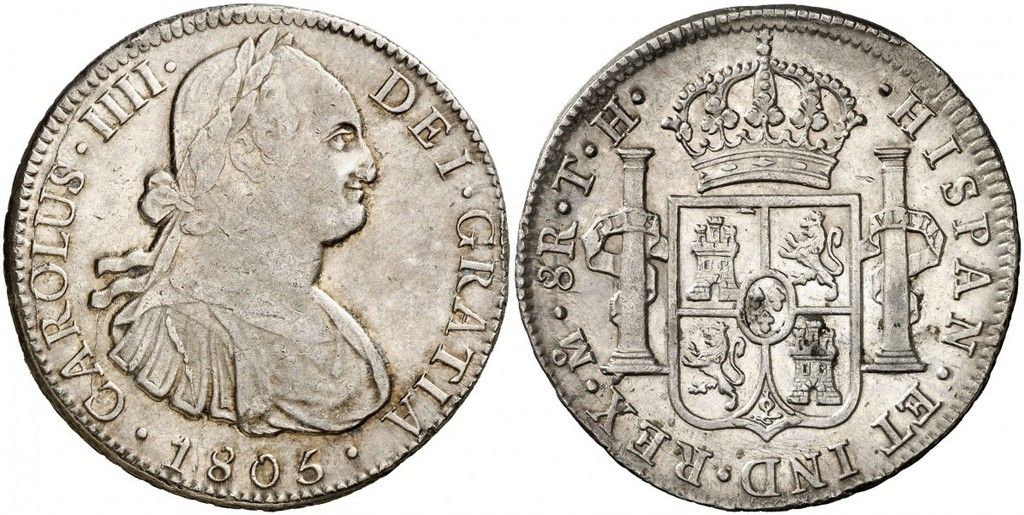
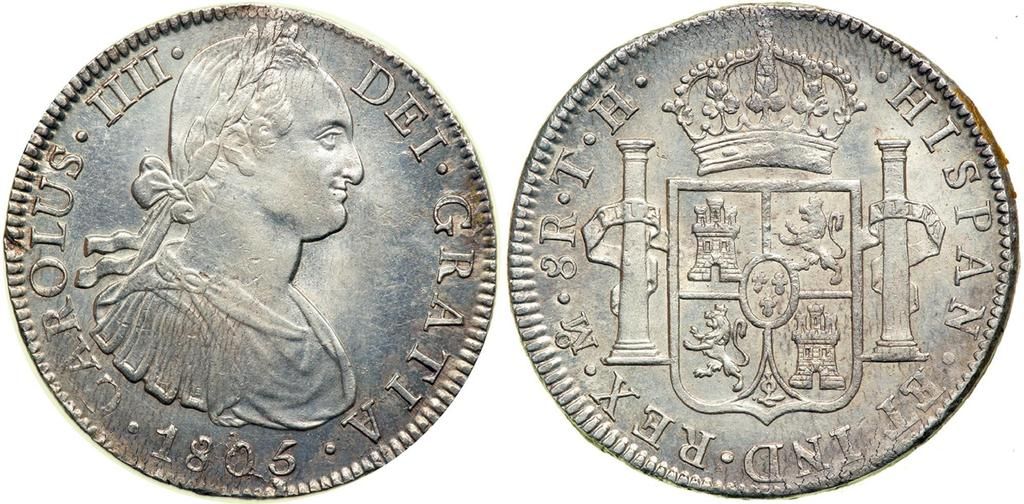


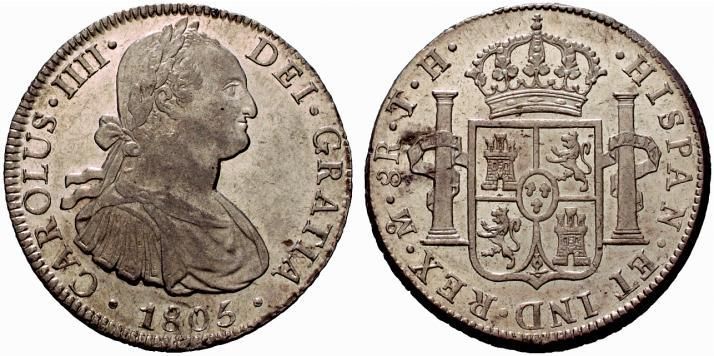
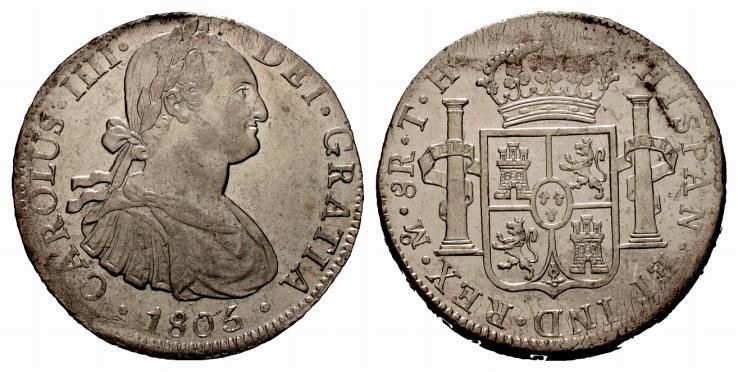
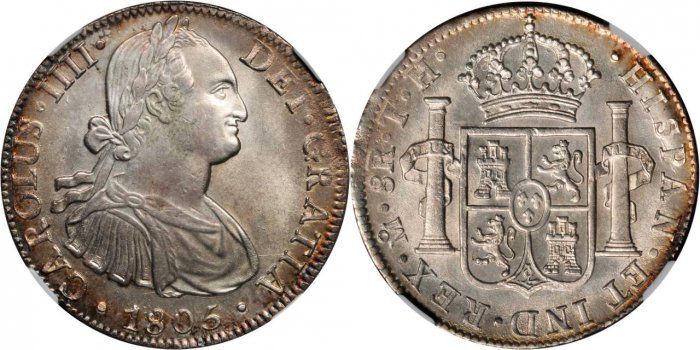
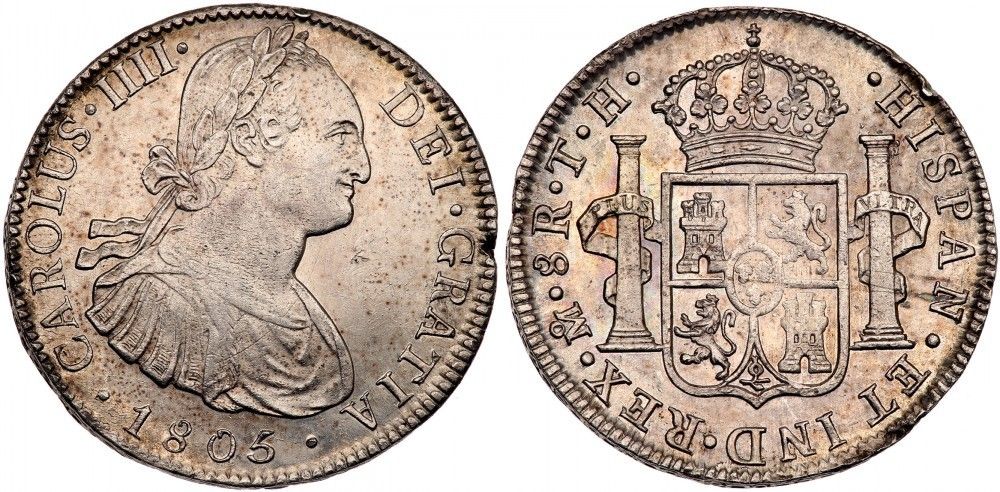

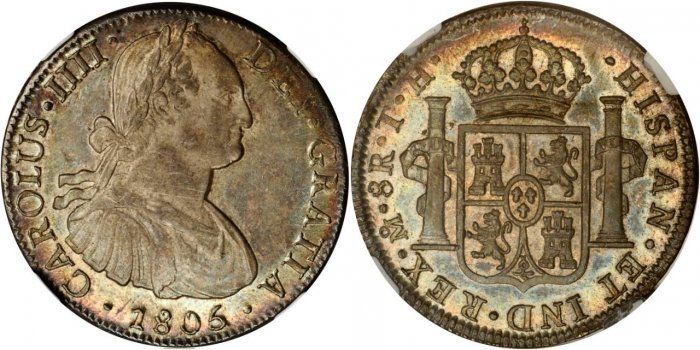
At a high level, there appears to be 3 places where the date can start relative to the bust:
1. Below the last epaulette (common)
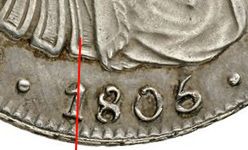
2. Below the line between last and second-to-last epaulette
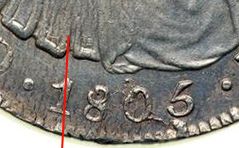
3. Below the second-to-last epaulette
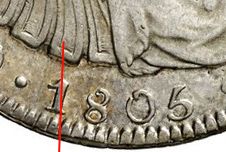
And 3 places it can end:
1. Below the line separating second and third fold (common):
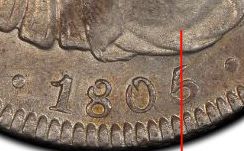
2. A bit more left from there:
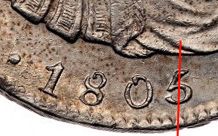
3. Below the mid-second fold of the bust:
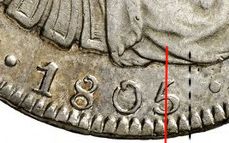
If you think about it, there was almost 26 million pesos of silver coined at Mexico City Mint that year with the large portion of that being in 8 Reales coins. Numerous dies that were all hand-punched (no hubbing back then), which means numerous varieties.
So, what exactly does Krause and NGC call the 1805 Wide Date, 1805 Narrow Date and a plain ol' 1805?
Let's start with what's already been slabbed. I've been able to find a few "Wide Date" examples:
Start loc:1 -- End loc:1
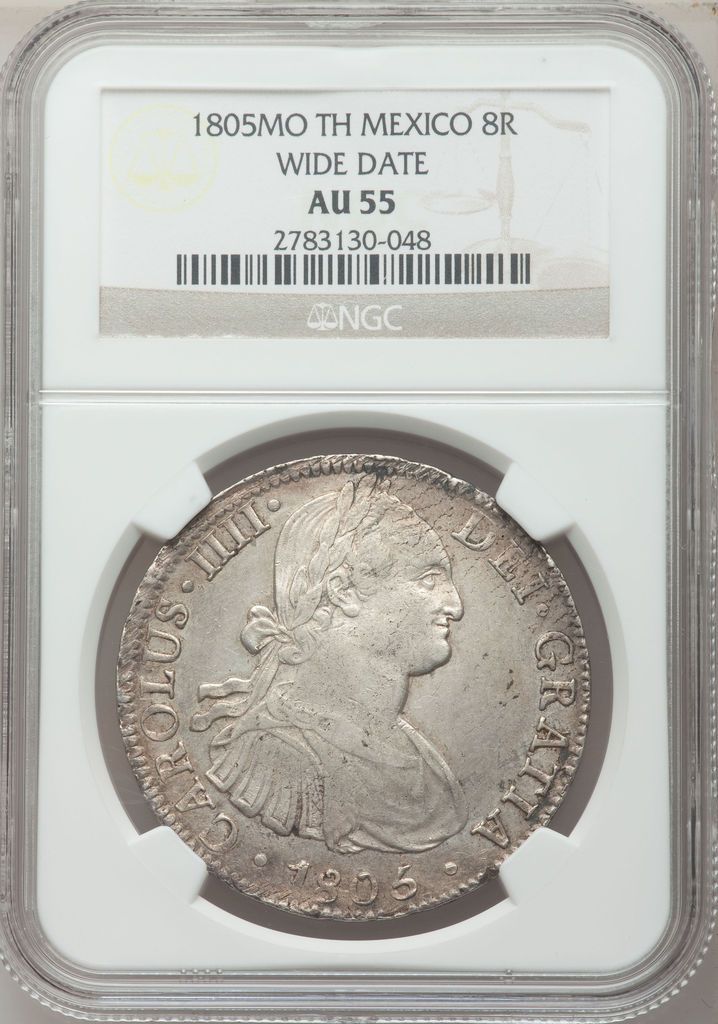
Start loc:1 -- End loc:1
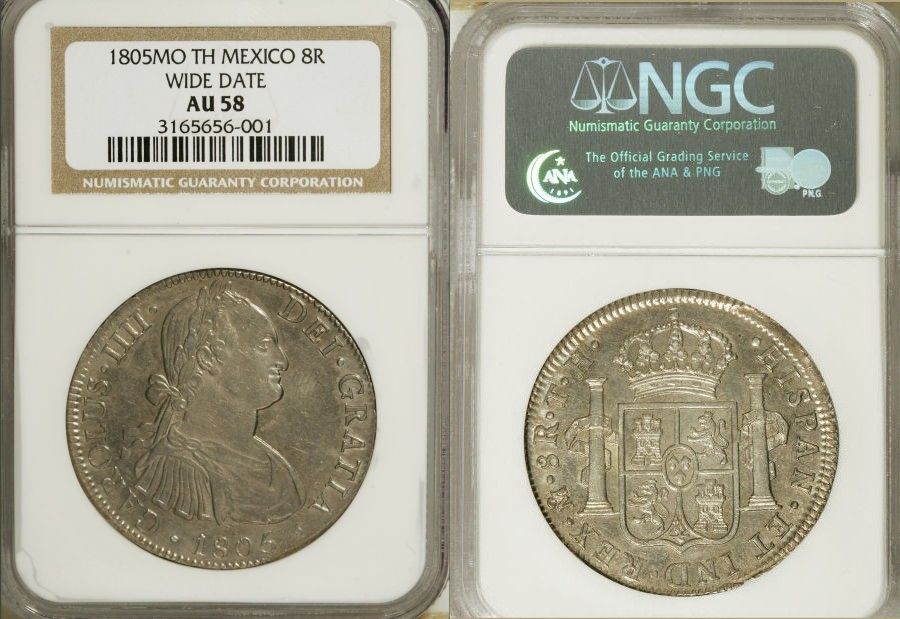
Start loc:2 -- End loc:2
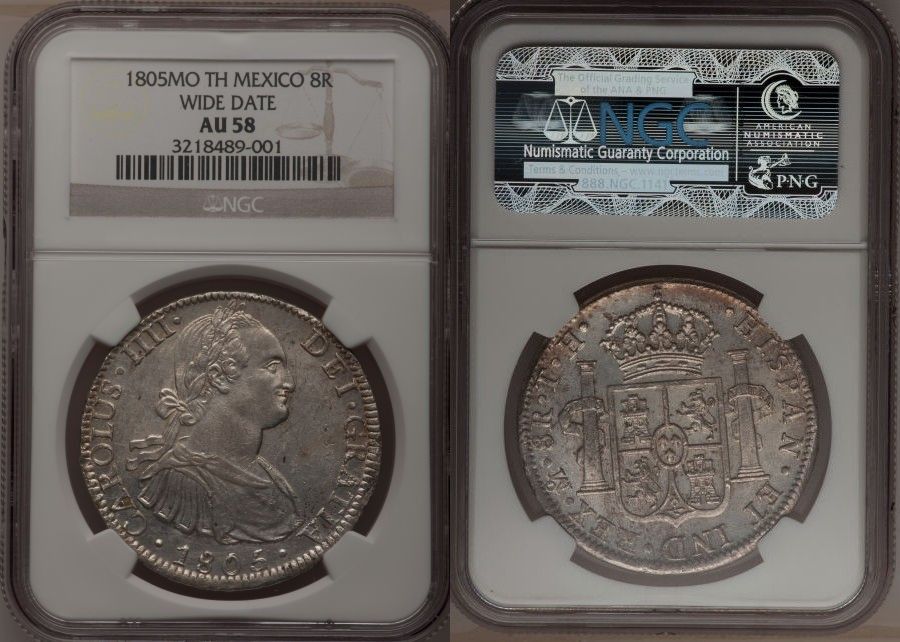
Start loc:2 -- End loc:2
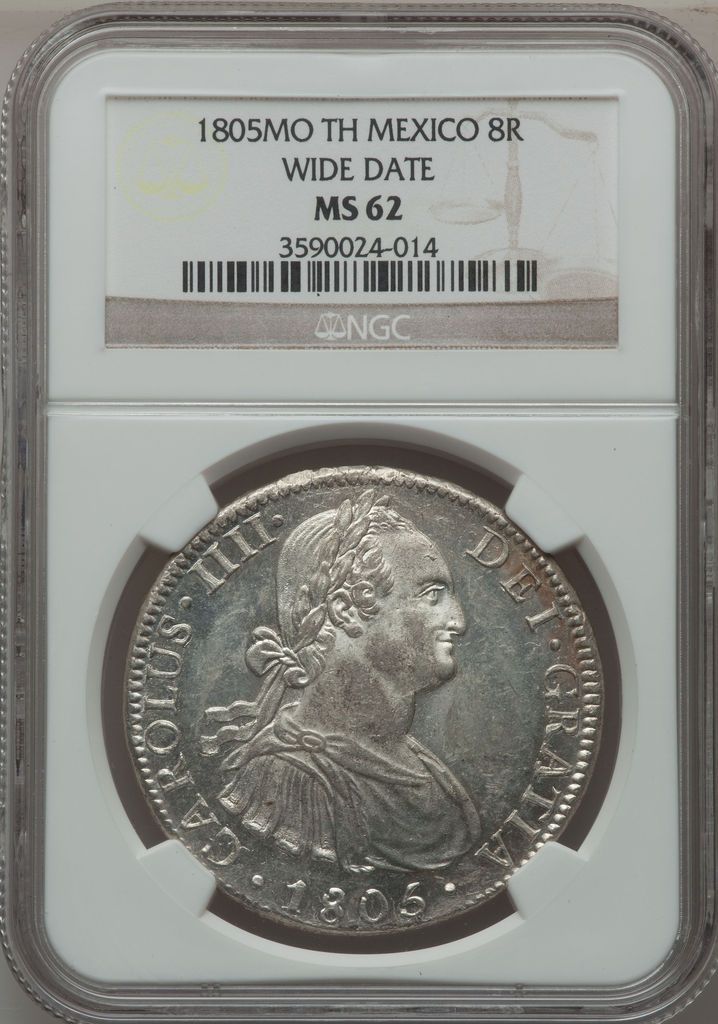
Start loc: 2 -- End loc: 2
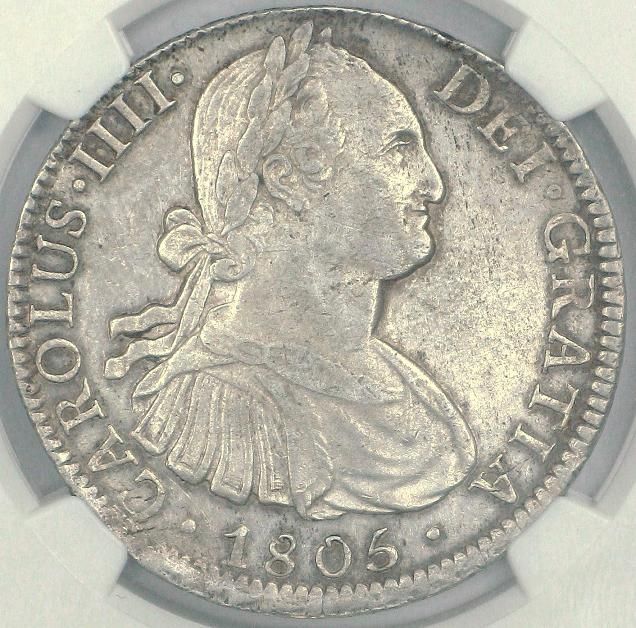
Narrow date was much harder to find.
I was able to find one with images of the slab and had to increase brightness / contrast. There's something weird going on with "5" in the date.
Start loc:1 -- End loc:1
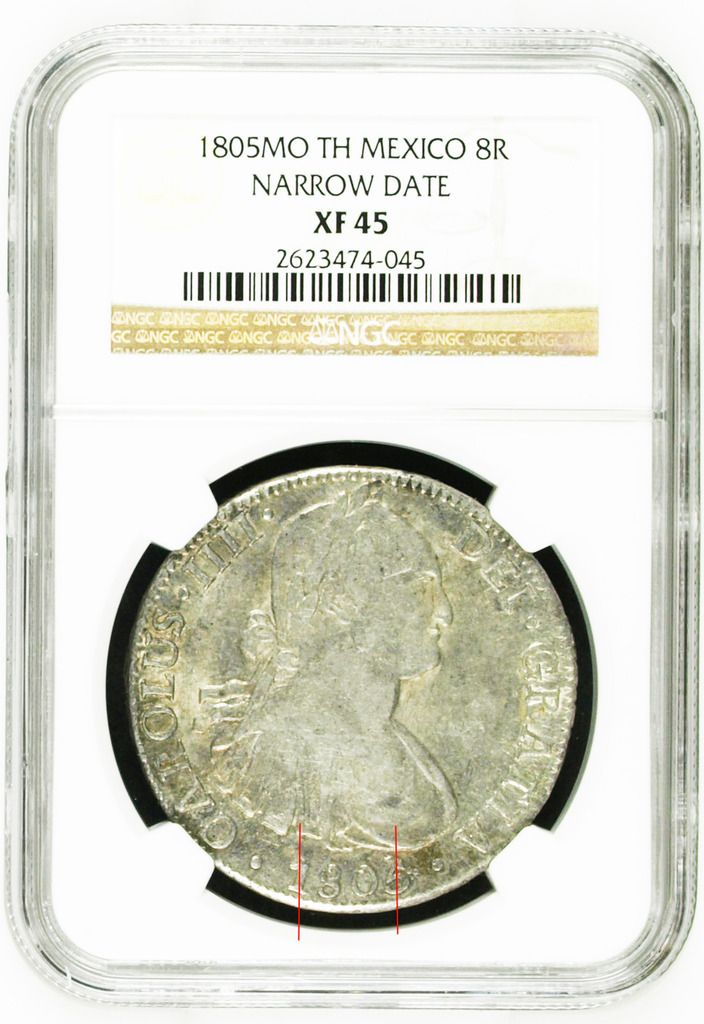
There have been a couple sold by Goldberg that were described as "Narrow Date", but no image of the slab provided:
Start loc:2 -- End loc:1
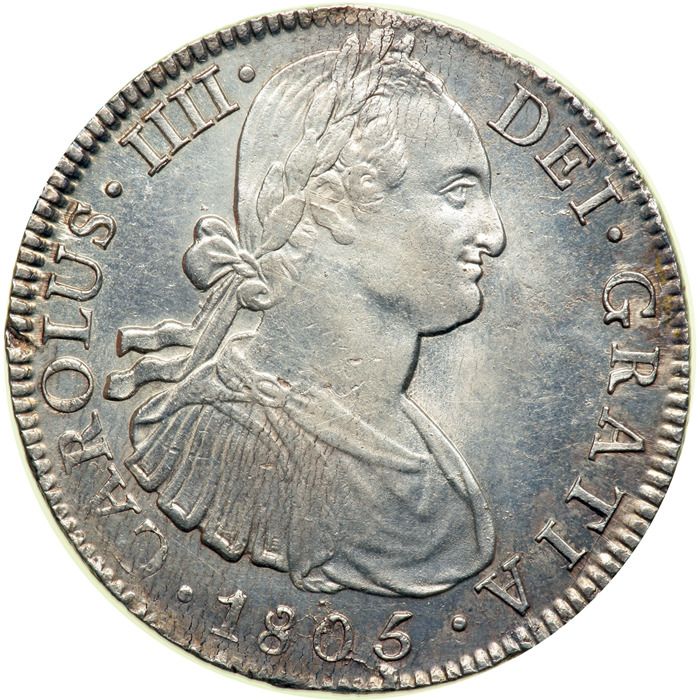
Start loc:1 -- End loc:1
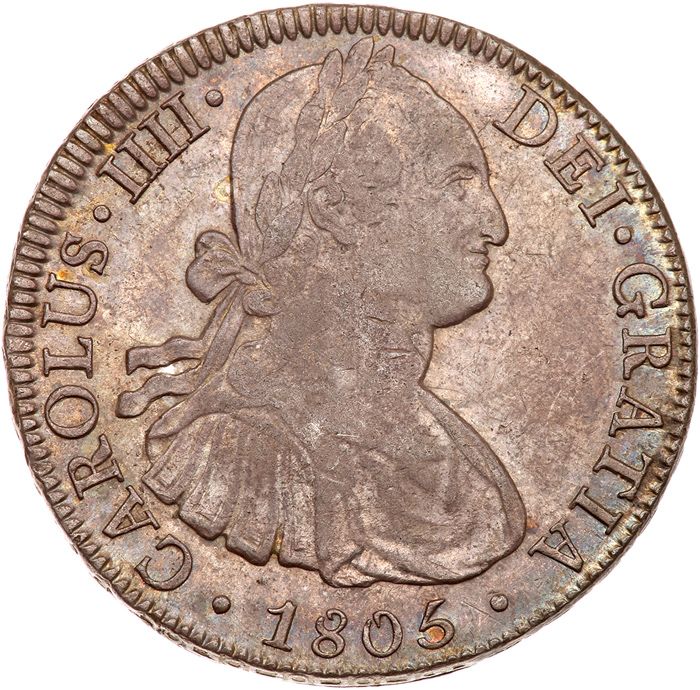
Looking at the non-attributed 1805's in NGC plastic - it seems to be all over the place.
So, after all this - i'm still stumped. As of right now, it seems that NGC just rolls the dice when attributing Narrow or Wide Date. If you're lucky - you'll get the Narrow Date designation, which seems to be the scarcer of the two based on prices realized.
Those are:
1805 Mo TH
1805 Mo TH Narrow Date
1805 Mo TH Wide Date
Checking a few of my references - Calbeto only lists 1 coin for 1805; Krause lists both Wide and Narrow Dates, valued identically; Cayon has the common 1805 Mo TH but also something I never knew existed - an 1805 Mo FF assayer (will have to look more into this one, but irrelevant for this topic); and I don't own a copy of Calico/Trigo, but our host just puts Calico-704 on all 1805's.
Here are some examples. See if you start to notice anything about the date.























At a high level, there appears to be 3 places where the date can start relative to the bust:
1. Below the last epaulette (common)

2. Below the line between last and second-to-last epaulette

3. Below the second-to-last epaulette

And 3 places it can end:
1. Below the line separating second and third fold (common):

2. A bit more left from there:

3. Below the mid-second fold of the bust:

If you think about it, there was almost 26 million pesos of silver coined at Mexico City Mint that year with the large portion of that being in 8 Reales coins. Numerous dies that were all hand-punched (no hubbing back then), which means numerous varieties.
So, what exactly does Krause and NGC call the 1805 Wide Date, 1805 Narrow Date and a plain ol' 1805?
Let's start with what's already been slabbed. I've been able to find a few "Wide Date" examples:
Start loc:1 -- End loc:1

Start loc:1 -- End loc:1

Start loc:2 -- End loc:2

Start loc:2 -- End loc:2

Start loc: 2 -- End loc: 2

Narrow date was much harder to find.
I was able to find one with images of the slab and had to increase brightness / contrast. There's something weird going on with "5" in the date.
Start loc:1 -- End loc:1

There have been a couple sold by Goldberg that were described as "Narrow Date", but no image of the slab provided:
Start loc:2 -- End loc:1

Start loc:1 -- End loc:1

Looking at the non-attributed 1805's in NGC plastic - it seems to be all over the place.
So, after all this - i'm still stumped. As of right now, it seems that NGC just rolls the dice when attributing Narrow or Wide Date. If you're lucky - you'll get the Narrow Date designation, which seems to be the scarcer of the two based on prices realized.
1
Comments
Remember this one ? I think its a wide date , but what do I know.
I can imagizine its confusing for graders, I personnally would consider a narrow date as 1805 and a wide date as 1 8 0 5 , no matter where it starts or ends under the bust of Charles.
Remember this one ? I think its a wide date , but what do I know.
Glad to hear it got to you safely and fast! Obviously not sure if it's a "Wide Date", but I do know the date is wider than the one I kept in my set
In terms of the date - Both of the "1805" and "1 8 0 5" scenarios should have been covered by my logic.
I think I'm just going to email NGC and see if I can get a clarification from one of the graders.
8 Reales Madness Collection
I've personally chosen to ignore the wide vs. narrow date for this year, it's not all that interesting even if we had a clear picture of the difference. Nice attempt at figuring it out though, I guess this is what you spend time on once you finish a set
I've personally chosen to ignore the wide vs. narrow date for this year, it's not all that interesting even if we had a clear picture of the difference.
I can't ignore it - these are actual registry slots at NGC and people are paying premiums for "Narrow Date" designation without what seems to be a clear definition. Or perhaps there is a definition and we're just missing it.
There are a 2 more sets in progress, but at present I have more time on my hands than money
OMG, my head is spinning!
So is mine!
8 Reales Madness Collection
8 Reales Madness Collection
So, who's responsible for this?
8 Reales Madness Collection
Awe geez. Why would they do this? And how could there possibly be 41 wide dates already designated?
Looks like they went through and split into wide and narrow based on something. Probably images. I noticed because my 1805 was de-registered from the sets and the coin description now lists it as Narrow Date. I sent a note to BJ and the registry team to get more info and to fix the registry sets this change impacted.
8 Reales Madness Collection
See if she will reconsider this change. It's a step backwards IMO.
Had an email conversation with BJ and she updated the sets to have just 1805-TH show up as a slot and both varieties would fill it. Even for the extended variety set there will just be 1 slot for 1805.
Looks like the attribution is here to stay, though. I asked BJ about how the slip was done, whether it was image-based and then the coins without images would be attributed to the more common Wide Date variety and she said that she didn't know how it actually occurred, but that the graders use PCGS photos extensively.
Most likely someone crossed an attributed NGC Wide or Narrow variety which prompted the split.
8 Reales Madness Collection
Lame, but at least the registry sets aren't impacted. Thanks for doing the leg work.